Art World
AI May Have Just Decoded a Mystical 600-Year-Old Manuscript That Baffled Humans for Decades
The secret to the Voynich Manuscript? It's in a language no one expected.
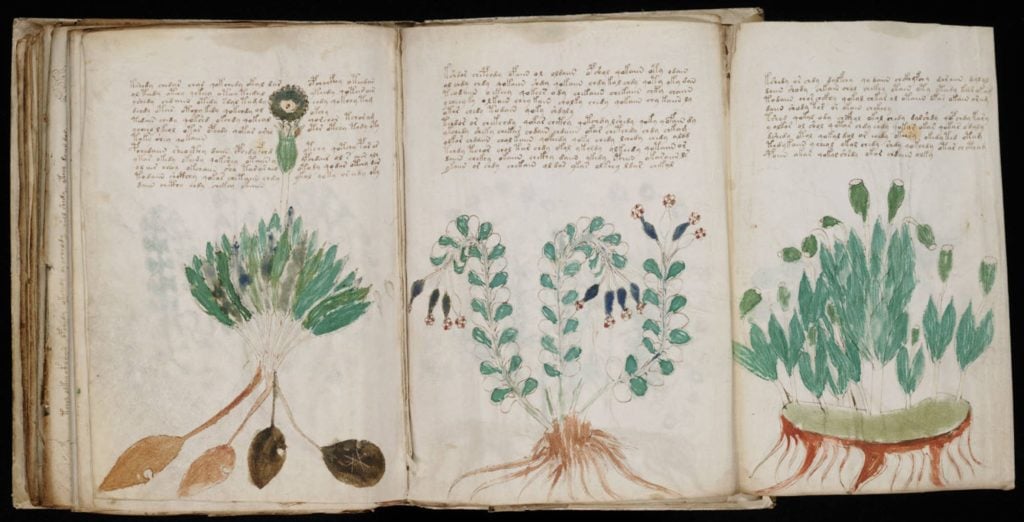
The secret to the Voynich Manuscript? It's in a language no one expected.

Sarah Cascone

One of the world’s most infamous mysteries may have just been solved, thanks not to human genius, but to artificial intelligence. Named after Wilfrid Voynich, a Polish book dealer who purchased it in 1912, the 240-page Voynich manuscript is written in an unknown script and an unknown language that no one has been able to interpret—until now.
Computing scientists at the University of Alberta claim to have cracked the code to the inscrutable handwritten 15th-century codex, which has baffled cryptologists, historians, and linguists for decades. Stymied by the seemingly unbreakable code, some have speculated it was written by aliens. Experts have even posited that the whole thing is a hoax with no hidden meaning. Today, housed at Yale University’s Beinecke Rare Book and Manuscript Library in New Haven, Connecticut, the manuscript’s delicate vellum pages are illustrated with botanical drawings, astronomical diagrams, and naked female figures.
When it came to tackling the centuries-old mystery, professor Greg Kondrak and grad student Bradley Hauer put their expertise in natural language processing to good use, running algorithms that compared the document’s text to the “Universal Declaration of Human Rights” in no less than 380 different languages. According to the computer, the Voynich manuscript was written in Hebrew.
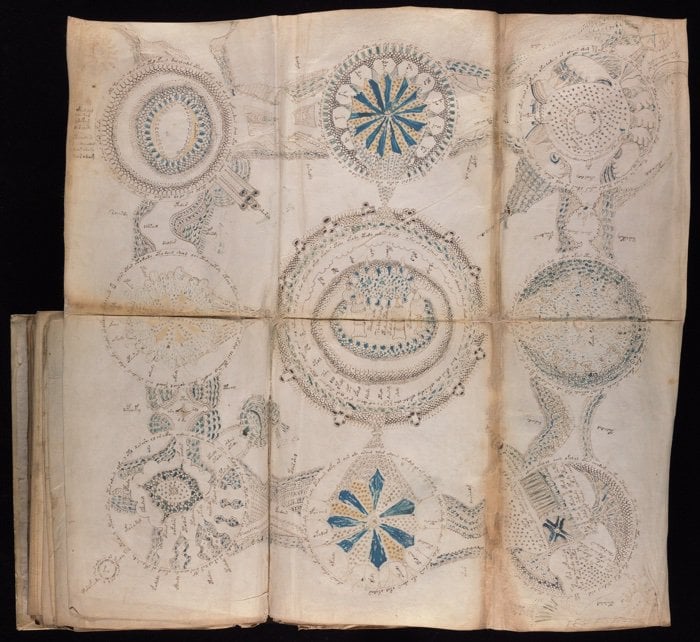
A page from the Voynich Manuscript. Canadian computing scientists believe they are cracking the code with the help of artificial intelligence. Photo courtesy of Yale University’s Beinecke Rare Book and Manuscript Library.
Other researchers had previously hypothesized that the document had been encoded using alphagrams, the letters in each word rearranged in alphabetical order. Based on that theory, Kondrak and Hauer used an algorithm to solve each anagram in the first 10 pages.
“It turned out that over 80 percent of the words were in a Hebrew dictionary, but we didn’t know if they made sense together,” Kondrak told the university. (He published his findings in the journal Transactions of the Association of Computational Linguistics.)
Their colleague, Hebrew-speaking computer scientist Moshe Koppel, took a crack at reading the first line to no avail. But, aided by a couple of spelling corrections, Google Translate had better luck.
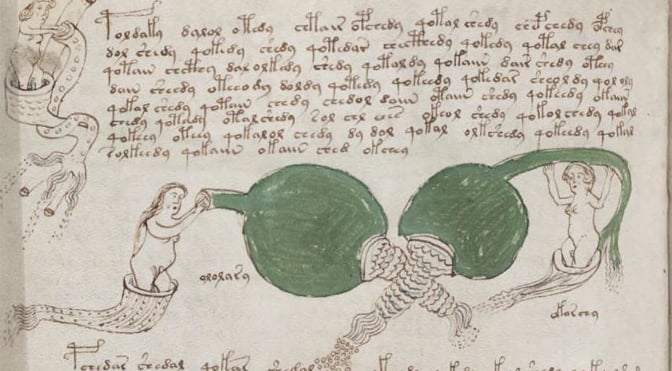
A page from the Voynich Manuscript. Canadian computing scientists believe they are cracking the code with the help of artificial intelligence. Photo courtesy of Yale University’s Beinecke Rare Book and Manuscript Library.
If the Alberta team is right, the first sentence of the manuscript reads “she made recommendations to the priest, man of the house and me and people.” Weird, yes, but an impressive breakthrough nonetheless.
Of course, after all these years, the Voynich Manuscript isn’t giving up all its secrets at once. Last year, scholars quickly debunked the claims of Nicholas Gibbs, who announced he had translated the tome from an abbreviated version of Latin and that it was a women’s health manual.
In their paper, Kondrak and Hauer acknowledged that more work needs to be done to definitively prove the accuracy of their discovery, but called their findings “a starting point for scholars that are well-versed in the given language and historical period.” Hopefully, Hebrew experts will follow up on this groundbreaking research and solve this mystery once and for all.
See more pages from the Voynich Manuscript below.

A page from the Voynich Manuscript. Canadian computing scientists believe they are cracking the code with the help of artificial intelligence. Photo courtesy of Yale University’s Beinecke Rare Book and Manuscript Library.
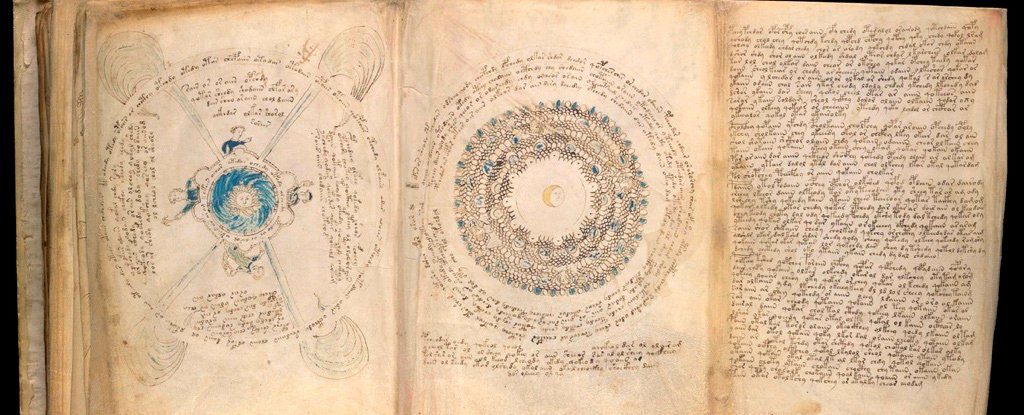
A page from the Voynich Manuscript. Canadian computing scientists believe they are cracking the code with the help of artificial intelligence. Photo courtesy of Yale University’s Beinecke Rare Book and Manuscript Library.
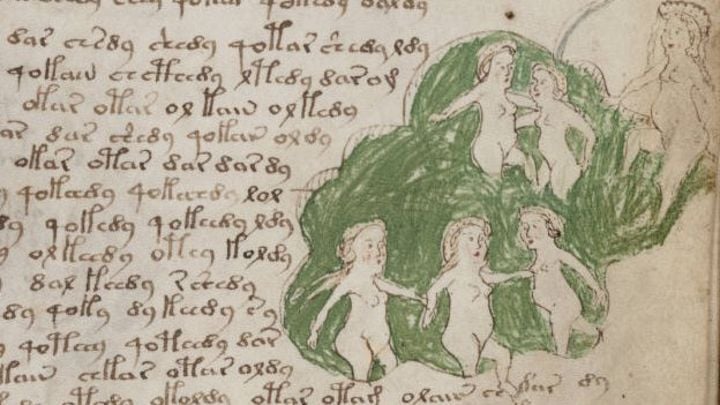
A page from the Voynich Manuscript. Canadian computing scientists believe they are cracking the code with the help of artificial intelligence. Photo courtesy of Yale University’s Beinecke Rare Book and Manuscript Library.
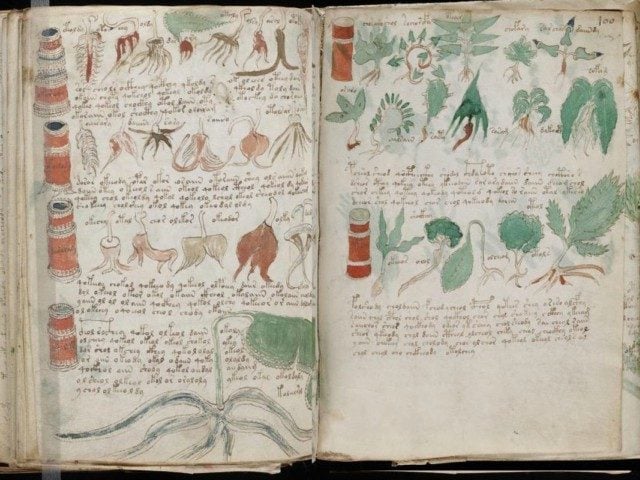
A page from the Voynich Manuscript. Canadian computing scientists believe they are cracking the code with the help of artificial intelligence. Photo courtesy of Yale University’s Beinecke Rare Book and Manuscript Library.
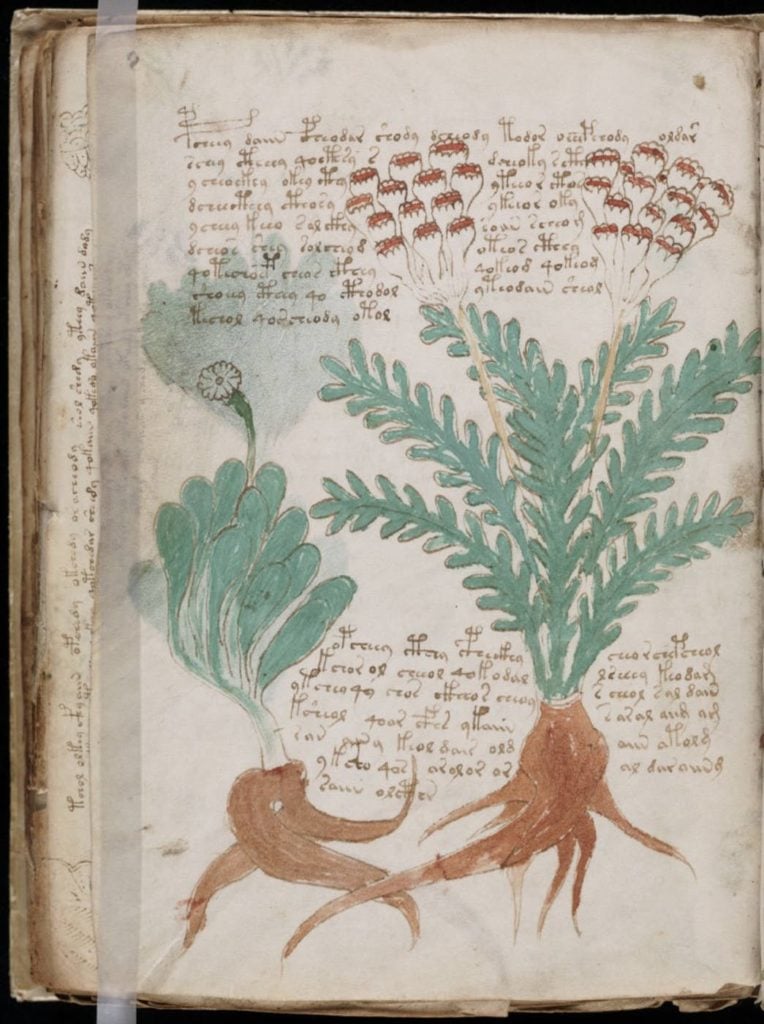
A page from the Voynich Manuscript. Canadian computing scientists believe they are cracking the code with the help of artificial intelligence. Photo courtesy of Yale University’s Beinecke Rare Book and Manuscript Library.
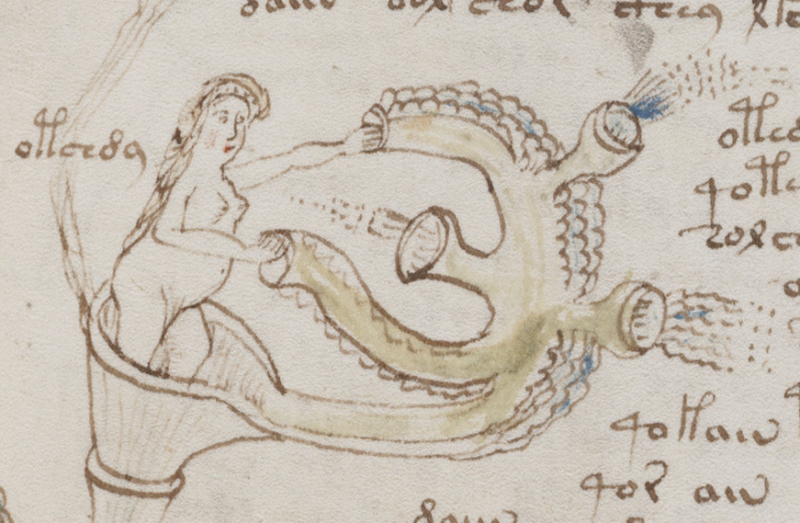
A page from the Voynich Manuscript. Canadian computing scientists believe they are cracking the code with the help of artificial intelligence. Photo courtesy of Yale University’s Beinecke Rare Book and Manuscript Library.
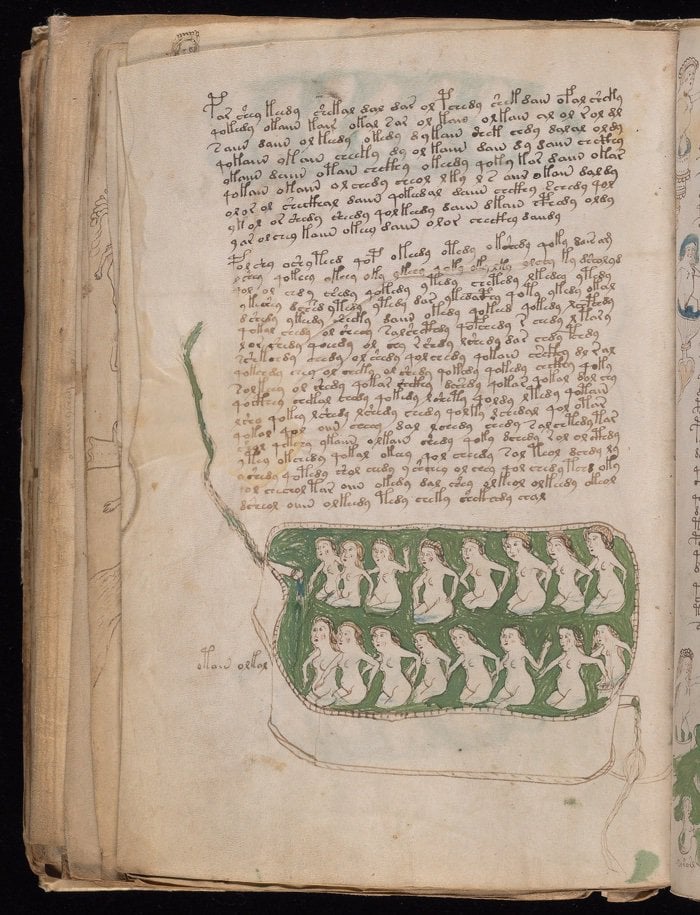
A page from the Voynich Manuscript. Canadian computing scientists believe they are cracking the code with the help of artificial intelligence. Photo courtesy of Yale University’s Beinecke Rare Book and Manuscript Library.
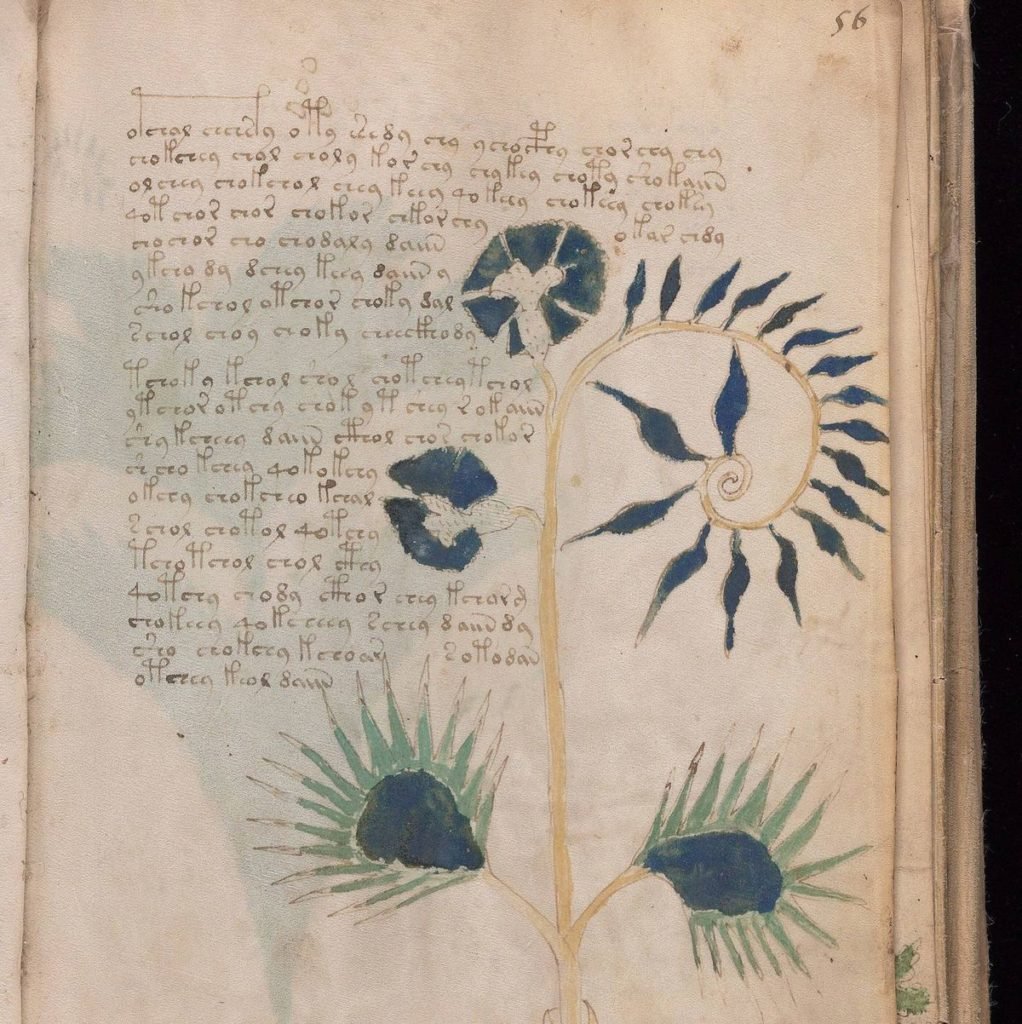
A page from the Voynich Manuscript. Canadian computing scientists believe they are cracking the code with the help of artificial intelligence. Photo courtesy of Yale University’s Beinecke Rare Book and Manuscript Library.